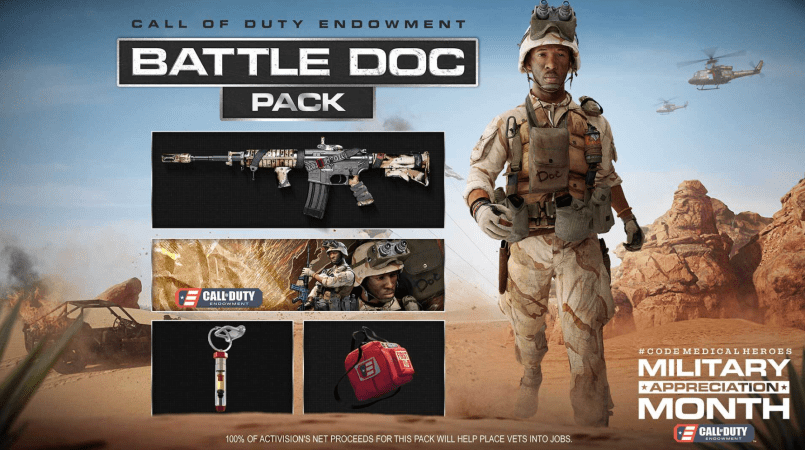Green Beret Travis Wilson is like most members of the Special Operations community. He normally looks at problems and sees two options: find a way around or blow your way through it. The latter worked for Travis downrange, but after multiple IED strikes, enough flashbangs in the face to make even Chuck Norris cringe, and a freefall accident (yeah, seriously, you read that right), Travis, now CEO of Time for a Hero, is taking on a problem that has stopped even the most talented doctors in the world: traumatic brain injury, or TBI.
TBI is often the result of an explosion or crash, both of which are common in the Special Operations community. However, unlike a broken leg or even a gunshot wound, brain injuries just don’t heal like the rest of the body. Even worse, no brain injury is the same, which is what keeps doctors from finding an effective treatment.
As a result, symptoms such as confusion, amnesia, insomnia, and depression can last for months and even years. This is exactly the world Travis found himself in after six deployments and numerous doctors reporting that there was no long term cure for his injuries. So, Travis took matters into his own hands or, more accurately, his own mind.

Travis serving as a Green Beret in Afghanistan
(Courtesy of Travis Wilson)
“It just didn’t make sense to me,” Wilson said. “The doctors were saying there is no cure, but having been a medic, I knew the body was resilient and could heal from all kinds of trauma. I knew there had to be a better answer.”
As a combat medic and exercise science major, Travis knew that the body had an uncanny method to fix itself, but he searched for a treatment that could specifically help brain cells repair themselves. That’s when Travis stumbled upon the founder of Time for a Hero and an unlikely, out-of-the-box solution: stem cells.
I know what you’re thinking: Stem cells? The highly politicized, seemingly creepy, and crazy expensive voodoo treatment that relies on cells harvested like something out of The Matrix? Yep, that’s right, except that Travis and the founders found a stem cell treatment that relies upon the host’s own cells and can be applied to multiple injuries, including TBI.
There was only one problem: The treatment was offered out of the country and was exclusive to the super wealthy and celebrities — you don’t think Tom Cruise has really aged backwards, do you?
Even though you may see stem cell “clinics” in the states, the truly innovative “body heal thyself” kind of treatments aren’t currently approved by the FDA, and aren’t covered by most insurance companies.
Even though the treatment costs roughly ,000 per session, access was a problem Travis could overcome. Travis paired with the founder of Time for a Hero to underwrite all costs for SOF veterans to travel to undergo stem cell therapy. The procedure uses the patient’s own stem cells harvested from the adipose tissue using liposuction (a plus if you’ve been out of the gym for a minute) and then injects the cells into the body using an IV therapy and direct injection into multiple joints.
Mesenchymal Stem cells, which are basically cells that haven’t figured out what they want to be when they grow up (much like most of us), travel through the body and, once they reach the brain, attach themselves to regenerate growth in trauma areas. To date, Travis and his team have sponsored over twenty SOF veterans through this remarkable treatment, and the veterans have reported significant improvement in their cognitive and physical wellbeing.

Travis undergoing Mesenchymal stem cell treatment
(Courtesy of Travis Wilson)
“We’ve seen some remarkable improvement in overall quality of life and thought processes,” Travis said. “These guys are sleeping again and are thinking more clearly for the first time in a long time. Many of these veterans feel alive again.” But there is an added bonus here that we didn’t expect: anti-inflammation, which Travis thinks can be used on the battlefield.
Travis went on to explain that millions of stem cells flooding the body results in positive anti-inflammatory (think bigger than just motrin) effects that allow the body to heal more rapidly. Travis and his team are starting to explore the idea of stem cell treatment on the battlefield, before years of trauma is left untreated.
“The research and data we are collecting from these SOF veterans during their stem cell treatment could help save lives on future battlefields. As a former combat medic, I know how critical it can be to reduce trauma in the first few minutes of an injury. We have a chance to help the body start to heal almost immediately.”
Travis and the Time for a Hero team are planning to treat many SOF veterans this year and will continue to collect data to support other stem cell programs. Travis and his team have even recently been using an app to monitor cognitive growth after the treatment. “I don’t know if the treatment will make you smarter, but it sure as hell has made things more clear for me.”
“We have hundreds of special ops men — and women — on our waiting list and that list is growing everyday. So we’re out spreading the word, letting people know what we’re doing, and asking for help every chance we get.”
For more information on TBI, or how to sponsor a SOF veteran’s treatment, please visit www.timeforahero.com.


















